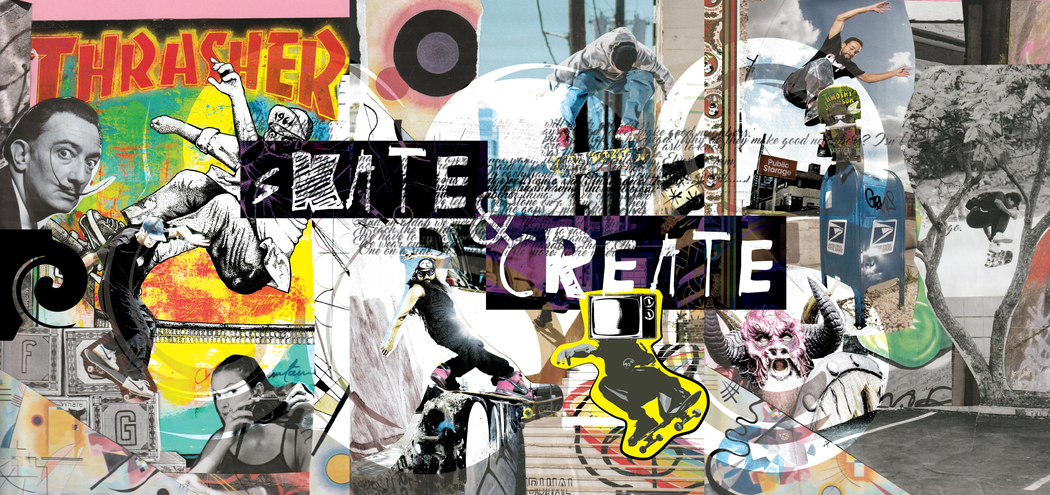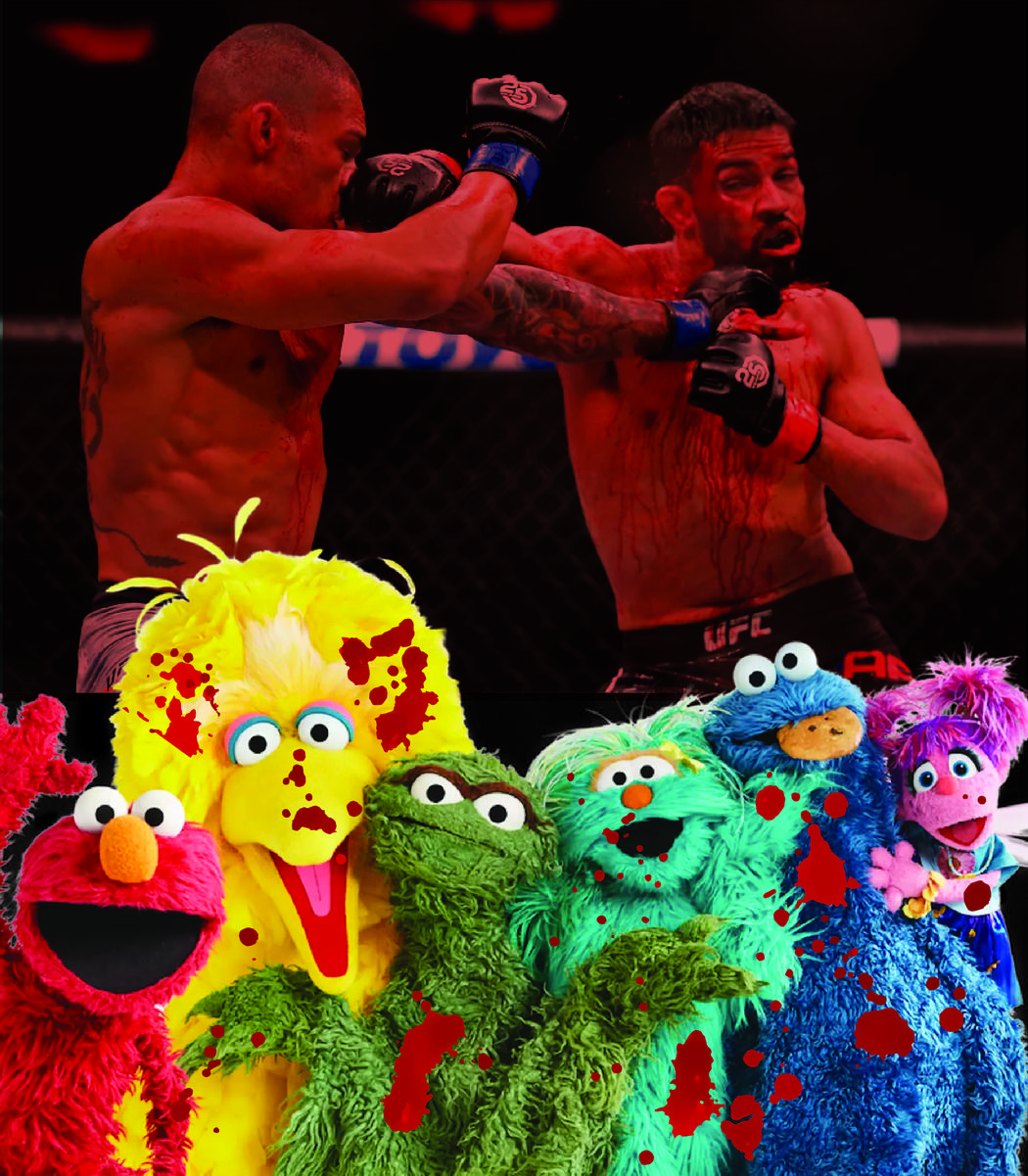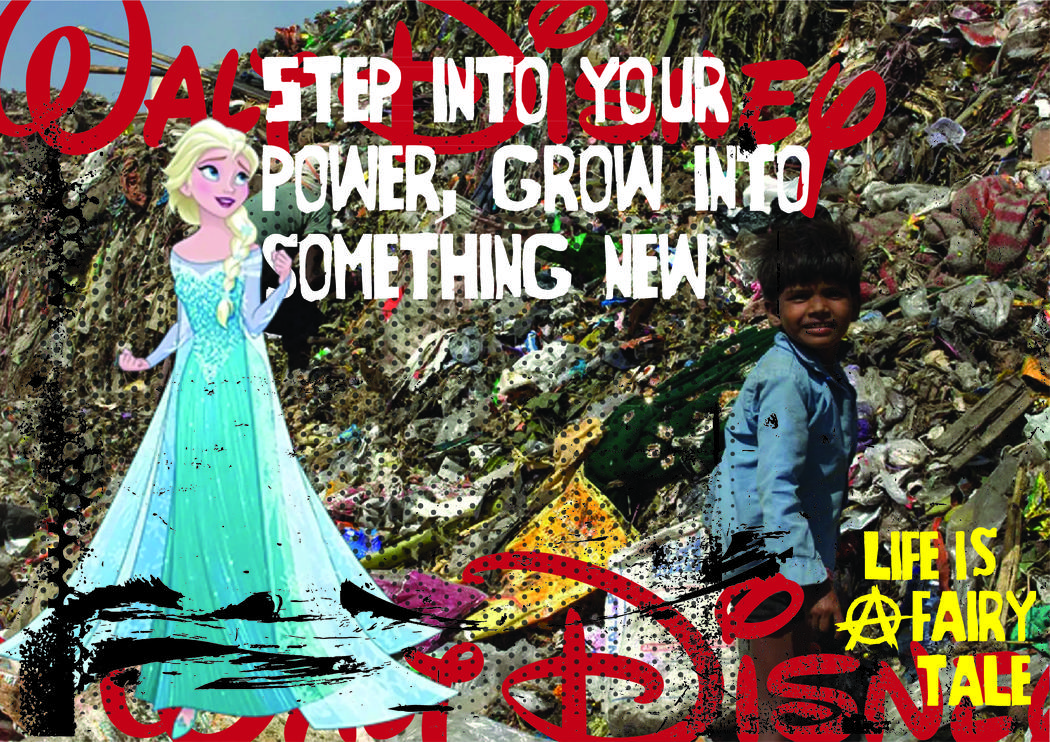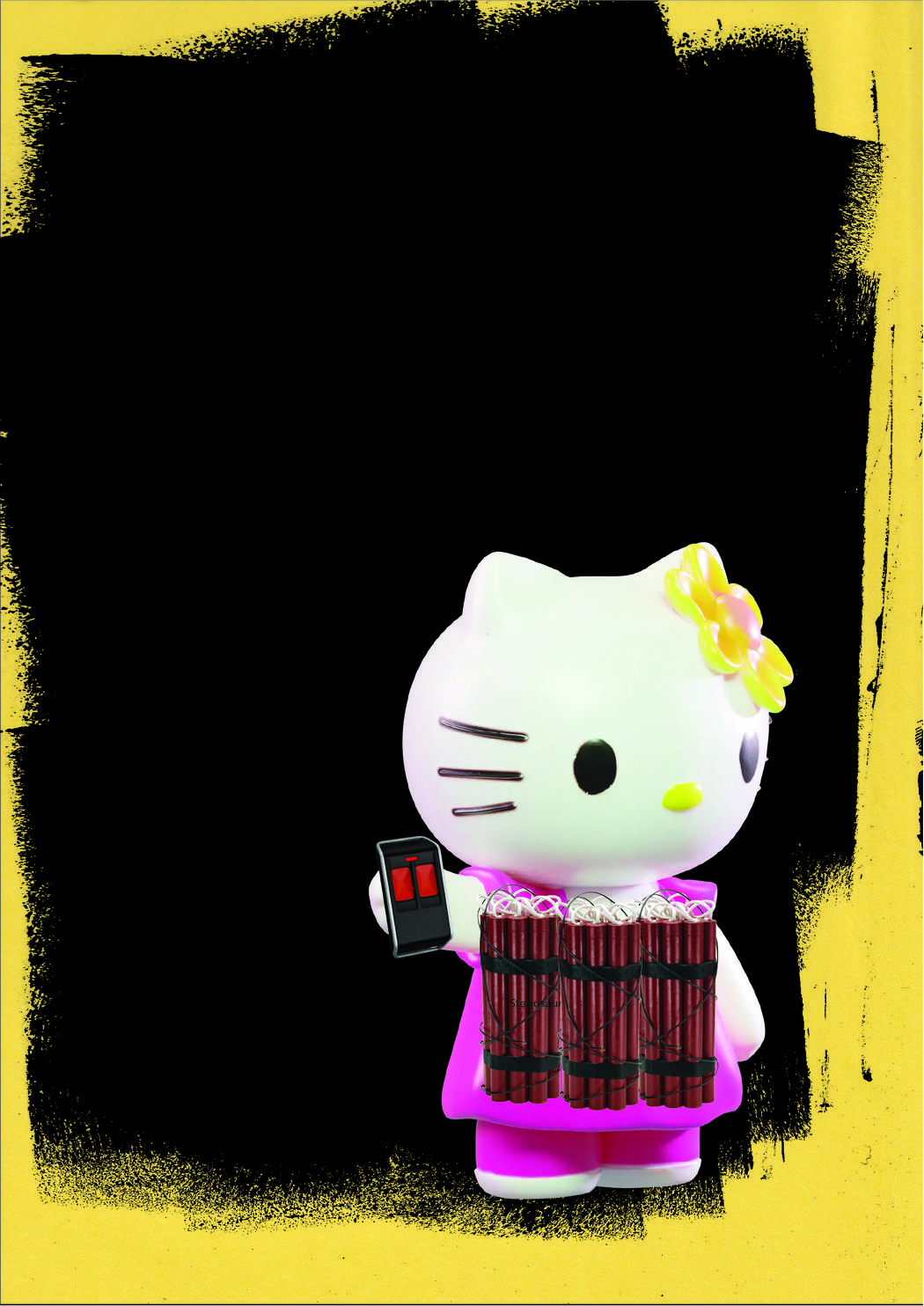Lior Zelering
Where do you live: Nova Scotia, Canada
Your education: BA, LM, LLB, currently pursuing a Doctorate
Describe your art in three words: Dada-inspired chaos
Your discipline: Digital · Mixed art
How did your early experiences with skateboarding and street culture shape your visual language and the themes you explore today?
They have profoundly influenced both my art and my worldview. The central aspect is DIY culture, which is integral to skateboarding and punk ethos—creating your own surroundings, scene, and opportunities through collective effort. This culture was amplified by bands and skate brands producing their own zines, logos, posters, and flyers. As a counterculture, its aesthetics featured chaos, broken typography, mixed media, and layered patterns and textures. Importantly, the work always carried a message or concept, often addressing broader social issues rather than personal ones. I am very much a product of my cultural environment—having started skating in 1988—and those values remain deeply ingrained in my art and in how I see the world.
You mention admiration for the Dada movement and punk music. In what ways do these influences appear in your techniques, humor, and visual narratives?
I greatly admire Dada, which I consider perhaps the last art movement directly tied to a philosophical mindset. Though brief, it laid the foundation for satire, collage, humor, social criticism, and absurdity. Its legacy stretches through Monty Python, pop art, punk art, and early stand-up comedy. For me, the strongest influences are humor as a tool for critique and the use of collage, broken typography, limited hierarchy, strong contrasts, layered textures, and elements of chaos. One of my touchstones is Hannah Höch’s Cut with the Kitchen Knife through the Last Epoch of Weimar Beer-Belly Culture in Germany (1919)—a masterpiece of critique and fragmentation.

You often merge digital and analog elements. Can you walk us through a recent artwork and explain how you combine these two approaches?
This goes back to my early love of Mac computers—I got my first one at 14, became obsessed with computer-generated art, and by 22 was teaching graphic software at universities. Over time, I found digital tools too easy and predictable, so I began challenging myself by incorporating collage and physical materials. I then scanned these collages and layered them digitally, creating a contrast between the raw, imperfect analog elements and the clean digital layer. This hybrid process not only enriches the work but also slows me down, giving me more time to think. For example, I made a series of three collages using Thrasher magazines—cutting logos, images, and pages, mixing them with my own drawings, then scanning and enhancing them in Illustrator.
Your art critiques both far-right and “woke” culture. How do you balance sharp social commentary with playful, ironic visuals?
In today’s climate of division, I think it’s vital to expose the absurdities on all sides. Most people can work together, but extremists—left and right alike—pull society apart. For me, this isn’t a political issue but a personality issue: hard-headed people convinced they have all the answers. My approach is to pinpoint an absurdity and contrast it. For instance, I created a project where I layered photos of children scavenging in landfills with motivational Disney princess quotes—highlighting the cruel irony in slogans about limitless potential when set against harsh realities.
 Lior Zelering | Mma Show | 2024
Lior Zelering | Mma Show | 2024
Superheroes, memes, and movies feature prominently in your work. How do you select which icons or trends to incorporate, and what role do they play in your storytelling?
Punk art is essentially a subset of pop art—it’s immediate, responding to current cultural phenomena. The idea is to hijack an existing icon or trend to deliver a message. For example, I recreated Kim Jong-un’s portrait in the style of Andy Warhol’s Marilyn Monroe series, transforming glamour into grotesque parody. In another piece, I depicted Hello Kitty wearing a bomb vest. These icons are instantly recognizable, which makes them powerful tools to expose absurdities, provoke questions, or contrast ideologies.
 Lior Zelering | Let It Go
Lior Zelering | Let It Go
As a multidisciplinary designer and creative director, how do your professional branding and UX projects influence your artistic process—or vice versa?
Honestly, I’d say they don’t intersect much. As a designer, my role is to be a channel for brands and businesses, helping them express their philosophy and achieve their goals. In that context, I have to set aside my artist’s mindset. Some designers—like Saul Bass or, to a degree, Paul Rand—developed their own signature style in commercial work, but I don’t see myself there. I focus on problem-solving. That said, I once created a hybrid personal-commercial project called Zero in Command, where I introduced the concept of an “open-source brand.” The idea was to give all design assets back to the community so users could print their own shirts locally, reduce waste, and reinterpret the brand however they liked. It was an inclusive, sustainable concept, though not pursued commercially.
 Lior Zelering | Hell O Kitty
Lior Zelering | Hell O Kitty
Having worked with international brands while living in Nova Scotia, how do local culture and global perspectives interact in your art?
Nova Scotia itself hasn’t shaped my art—it’s a calm, green, lake-filled province, the opposite of the chaos I tend to depict. Globally, though, American culture influences all of us, largely through the internet. I don’t see that as inherently negative, but it has amplified global chaos. The real “culture shock” for me is often in YouTube comment sections, where toxic, ill-minded behavior gets normalized—reminding me how skewed and volatile the digital landscape can be.


Leave a Reply